
Note: This is the second post about our trip to Vienna. The other one—with all of the art, palaces and museums—is here.
We arrived at Vienna Central Station on a Monday night in February. The first thing I noticed upon walking to our tram stop outside the station was how quiet it was.
Was it some national holiday I didn’t know about?
There were few cars on the streets, only a few people walking along the sidewalks. Not so few that it felt dangerous or creepy—but definitely different than the 24/7 street party that is central Berlin.
The second thing I noticed was that it was clean. No graffiti. No broken glass or takeaway containers littering the sidewalks. Definitely not Berlin.
Riding the tram out to our hotel in Alsergrund, I did see some nightlife—ice skaters enjoying the multilevel outdoor rink in front of the Rathaus, the inviting lights of numerous cafes near the Museums Quarter, dinner cruisers floating along the Danube.
After spending the week there, I feel that Vienna just has a more relaxed vibe than frenetic Berlin—one that I really like. Of all the places we’ve visited since moving to Europe almost three years ago, Vienna was the first place I thought, ‘I would move here tomorrow, if I could.’
For the better part of a decade, pundits have named Vienna the world’s Most Livable City.
And it wasn’t hard to see why.
Eating and drinking
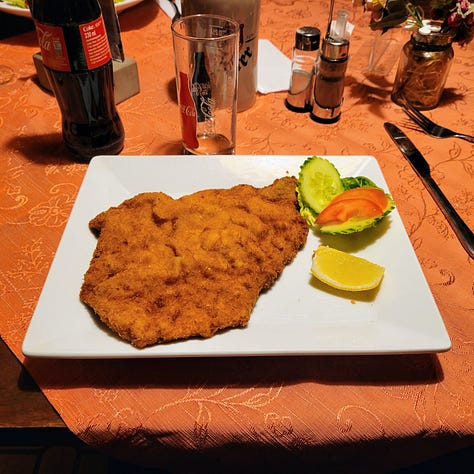
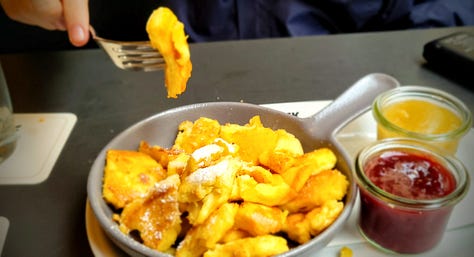

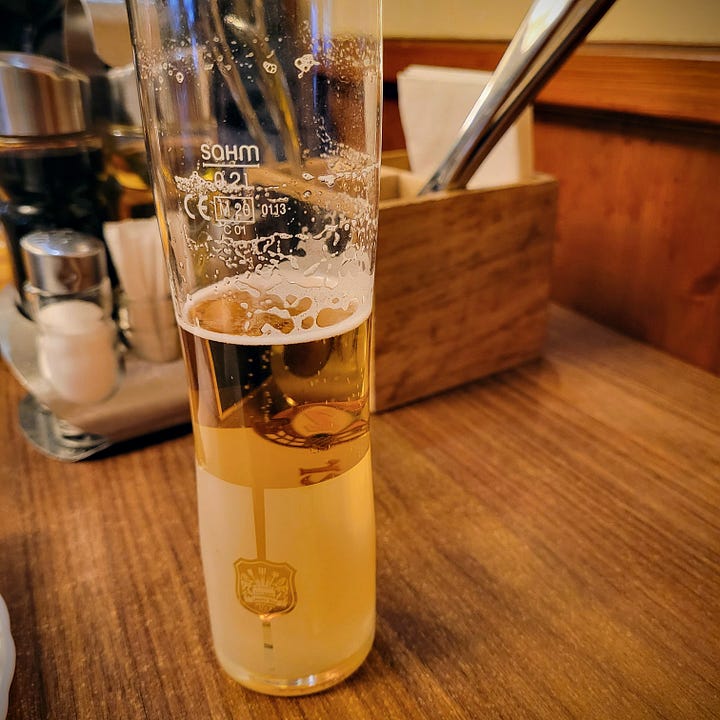

I don’t know if it was the Viennese accent or that locals are more patient or those cute little beers with lunch—but I had a much easier time speaking and understanding German here than even at home in Berlin.
I understood everything. I could shop, buy tickets, and order food in restaurants without people always switching to English.1
It was awesome.
Then, there was the food.
Part of its legacy as the capital of a formerly large empire, Vienna has long been a melting pot of cultural and culinary influences from all over Europe and Asia. And, of course, it attracted a lot of talented chefs and bakers intent on producing food fit for a king (or a queen) and his court.
One example: Although France is famous for its croissants, the pastry is originally Austrian, and legend has it that Marie Antoinette popularized it in her adopted homeland by asking bakers to reproduce her favorite Austrian cresent-shaped pastry, known as kipferl, there.2
The city residents have also developed a relaxed cafe culture to better facilitate the enjoyment of all the good, rich food.
In a Viennese cafe, you can have anything from a coffee and pastry or a glass of wine or beer—to a full meal. And take your time.
A neighborhood cafe is like a large living room—a place where you can sit and read the daily paper or meet up with friends and visit for hours.
We had both a breakfast and a dinner at Kaffee Monarchie around the corner from our hotel. The dining room is furnished with heavy oak tables and upholstered chairs that look like they are from the imperial era. Paintings of the Habsburgs adorn the walls, and food is beautifully plated on delicate china.
Our waitress at dinner was wonderful—apologizing for lingering at a nearby table before taking our order. She wanted to say goodbye to a regular customer and her little dog who were moving away the next week.
We also had several great meals Gasthaus Grabmüller, which serves classic Austrian dishes, and where my teenage son discovered an enduring love for Wienerschitzel and potato salad.
Although furnished more simply, customers there also came in for a small dinner or drink—and watched a soccer match on the small TV, or just read the paper or chatted at the bar.
The staff welcomed us like we’d been coming there every day for years instead of four times in a week.
Then, there was the Naschmarkt.
An open-air market roughly a mile long in the Wienzeile (it is built over the Wien River), with stalls that sell everything from fresh fruits and vegetables, to different kinds of cheeses, baked goods, to fresh pasta, olives and pickles. There are also butchers and fish mongers selling their wares.
And, in case you don’t fill up on the free samples on offer, then there’s a whole alley next to the market stalls with small restaurants.
Foodie heaven.

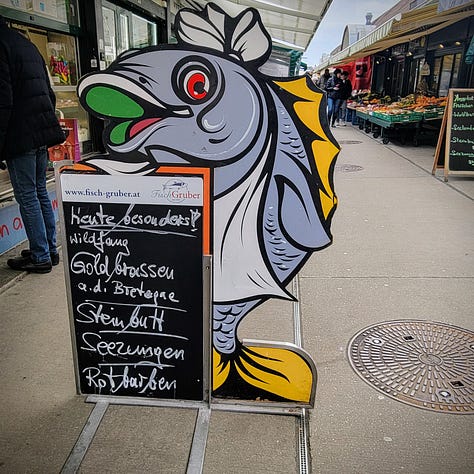
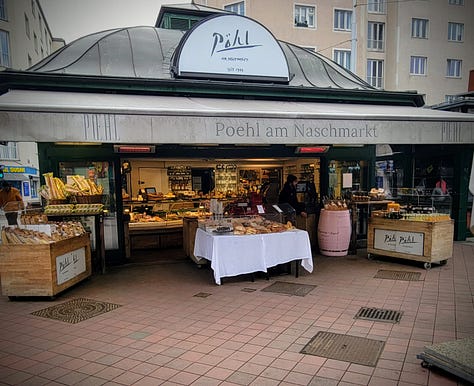



Getting around
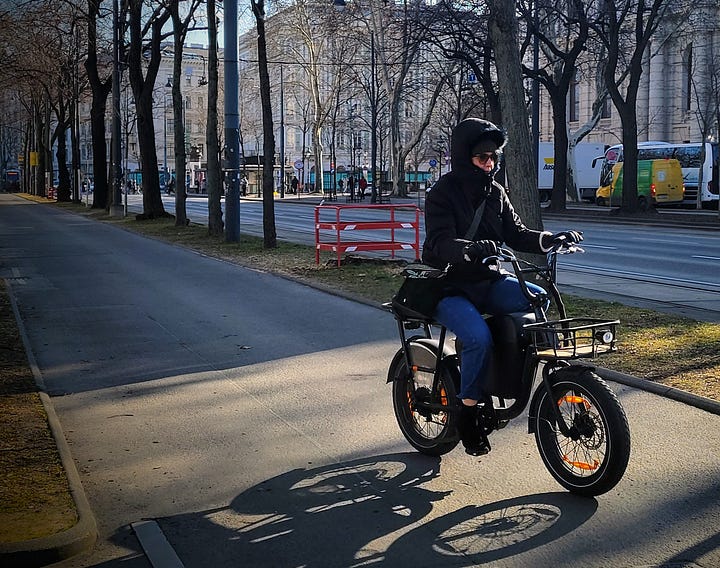
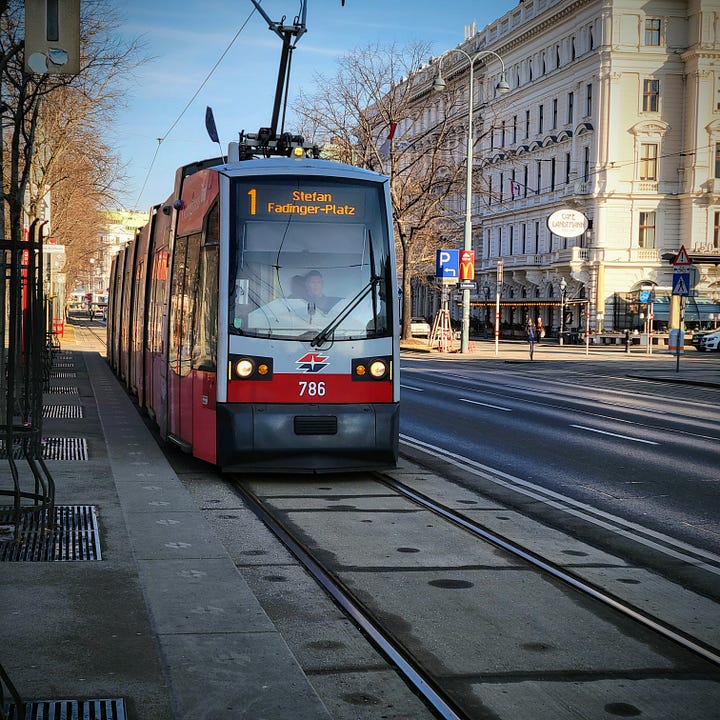
If you don’t have a car and don’t want to rent one, don’t worry. Vienna’s excellent public transit service is complemented by an extensive cycle path network to make navigating the city car-free easy. You can rent a bicycle from its public bike rental service, WienMobil Rad, or rent from a bicycle shop or an private bike-share service.
More than half of Vienna residents commute to school and work using the transit system, which includes buses, streetcars, the U-bahn subway system and the Schnellbahn (S-bahn) commuter rail trains. Thirty-nine percent of all journeys are made by public transport—the highest percentage of anywhere in Europe.
More than half of Vienna residents report that they walk to work or school, with just a quarter indicating they commute by car alone. Transit passes are affordable—costing rougly $1 per day, and the trains, trams and buses run reliably and frequently.
The city’s investment in constructing more bike infrastructure is also continuing to pay off with the city reporting a five percent increase in the number of cycle trips in 2024—up to 11.4 million trips by bike recorded at 17 different counting stations.
All of this is designed not just to make living and getting around the city more pleasant—but healthier. Vienna has pledged to become climate neutral by 2040, and reducing the city’s car dependence will be a key factor.
Affordable housing
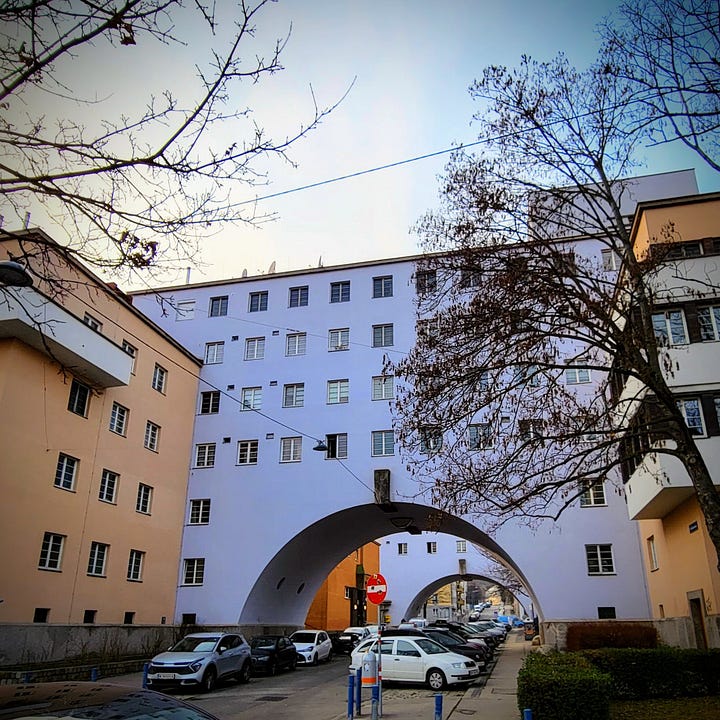
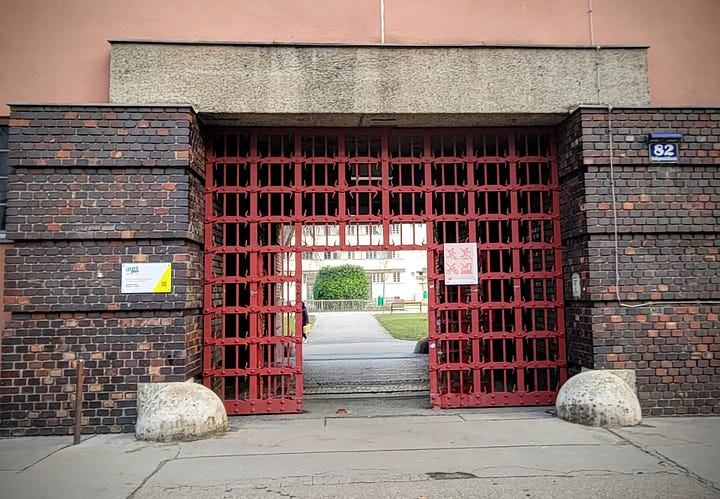
While most European capitals are struggling with skyrocketing housing costs and not enough homes to meet demand, Vienna has managed to remain affordable.
Renters in the city pay, on average, about a third of what renters in London, Paris or Berlin do.
So I definitely set aside some time to go see what I was missing out on.
Vienna’s housing ‘abundance’ (for lack of a better word) is mostly due to an aggressive building campaign in the early 20th century to create enough housing to support its population. Then, an enduring commitment by city leaders since then to continue to build and retain ownership of that housing.
Today, approximately 30 percent of apartments in Vienna are owned by the city, and another 20 percent are cooperative developments that are tenant-owned but receive public subsidies. Rents are calculated on a sliding scale dependent on the tenant’s income. But people of all income levels live in Vienna’s social housing blocks.
And they aren’t bare-bones “project” housing—all have shared amenities like laundries, hair salons, on-site childcare centers and libraries. Some have rooftop swimming pools and movie theaters!
These “superblocks” from the 20s and 30s don’t look like ordinary social housing. With the modernist ideals of the contemporaneous Bauhaus school yet to capture the imagination of Austrian architects, for one, they haven’t got flat roofs. The most famous examples of Red Vienna social housing, such as the Karl Marx-Hof in the 19th district or the estates dotted along the “Ring Road of the Proletariat” on Margaretengürtel, look more like castles or monasteries, with art deco flourishes on their facades.
The Hundertwasserhaus, in the city’s third district, is a city-owned apartment complex designed by artist and architect, Friedensreich Hundertwasser, in a colorful modernist style.
Built between 1983 and 1985, the complex contains 50 apartments of varying sizes, as well as four commercials spaces, with an interior planted garden, and numerous dedicated greenspaces on the exterior and interior of the building.
Of course, nothing in Vienna looks green in February. And my photos don’t show it in its best light.
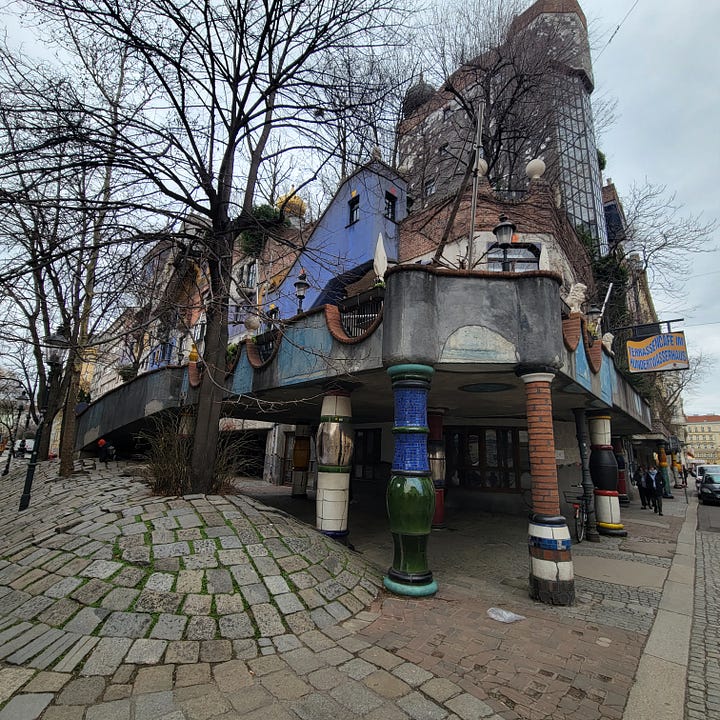
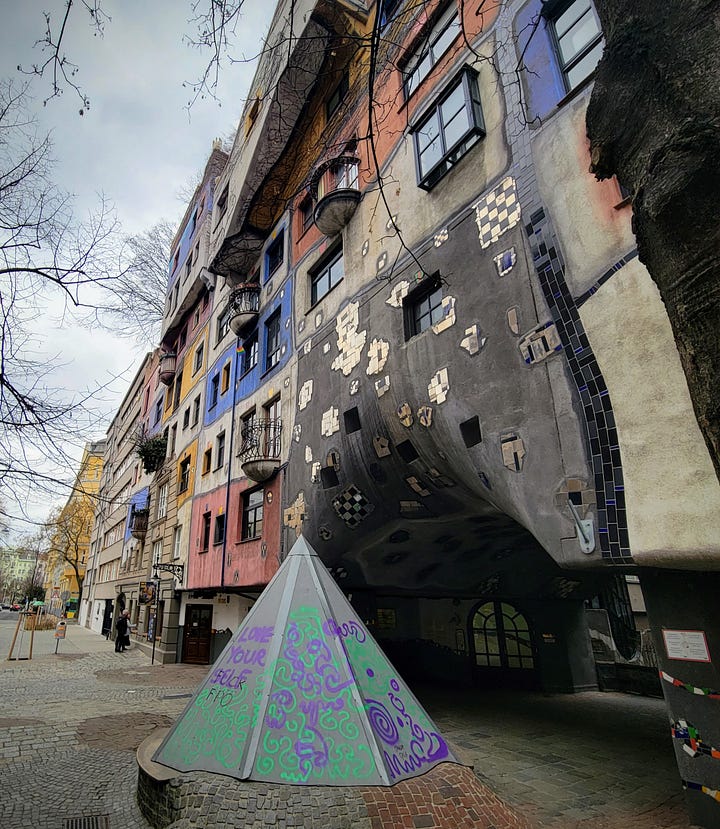
More tips for visiting Vienna
As I said in my first article, I could have spent a month in Vienna and still have things left on my ‘must see’ list. And, as I said in the first paragraph, above, I would probably move there tomorrow, if I could.
For more info on visiting Vienna, I recommend getting the Lonely Planet guide, as well as Rick Steves’ Pocket Vienna. I downloaded both as eBooks on my tablet. And check out these videos from Deutsche Welle and the Vienna episode of Classical Destinations with Simon Callow.
I’m writing my itinerary for a return trip.
Plenty of people speak English, though. Tourists, fear not.
Actually, a Viennese baker, August Zang, moved to Paris and opened a bakery in the 1830s. He is likely the person who brought the croissant from Vienna to France—and created the style of pastry still known there as Viennoiserie.




